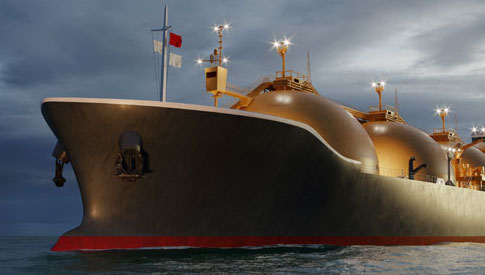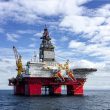by Maurice FitzMaurice, Research Analyst & Portfolio Manager, Equity, Fidelity Investments
The timeline for how LNG could play a meaningful part of Europe’s turn away from Russian energy.
Germany is fast-tracking plans for several liquefied natural gas terminals as it seeks to reduce its dependence on Russian natural gas, notes Fidelity’s Maurice FitzMaurice, although he says increased U.S. capacity to supply Europe is at least three years away.
“I see strong secular-growth trends for LNG over the next few decades, but the U.S. doesn’t have incremental LNG to sell right now and there’s nothing new coming until 2024 at the earliest,” says FitzMaurice, manager of Fidelity® Select Energy Portfolio (FSENX). “I think it’s a recipe for a tight LNG market in the interim.”
In late March, the Biden administration announced plans to supply 15 billion cubic meters of LNG to European markets and set up a commission with the goal of ramping LNG shipments even further through at least 2030. The announcement led to a near-term rally for Henry Hub gas futures and the stock price of Cheniere Energy (LNG), the largest U.S producer of LNG, FitzMaurice notes.
Yet it’s not clear where the U.S. gas will come from, according to FitzMaurice. Most U.S. terminals are operating at full capacity, and we’re still a few years out from seeing any new supply coming online. Thus, he says Europe may have to outbid Asia to receive the promised gas shipments.
FitzMaurice says Russia is likely to be seen as an unreliable gas supplier to Europe, possibly for decades to come. Thus, he believes Europe will reduce Russian imports and Russia likely will struggle to build LNG terminals backed by long-term contracts.
As for Germany, it’s busily fast-tracking two LNG terminals on the North Sea, one at the port of Brunsbuttel and the other at Wilhelmshaven. UK-based Shell is the first to book significant capacity for the Brunsbuttel terminal.
FitzMaurice notes European countries, including Germany, Italy, and France, are contracting for floating LNG import facilities, which can be brought on line fairly quickly to help reduce the reliance on Russian gas. For example, Germany instructed several utilities within the country to rent floating LNG units. And in late March, Germany Vice-Chancellor Robert Habeck visited potential LNG suppliers in the U.S., Canada, Norway, and Qatar.
“Companies like Cheniere have always said that their main competition in Europe is Russia and Qatar, and one of those major players is now significantly impaired, possibly for a very long time,” FitzMaurice says.
For specific fund information, including full holdings, please click on the fund trading symbol above. Cheniere Energy was a top fund holding as of March 31.














